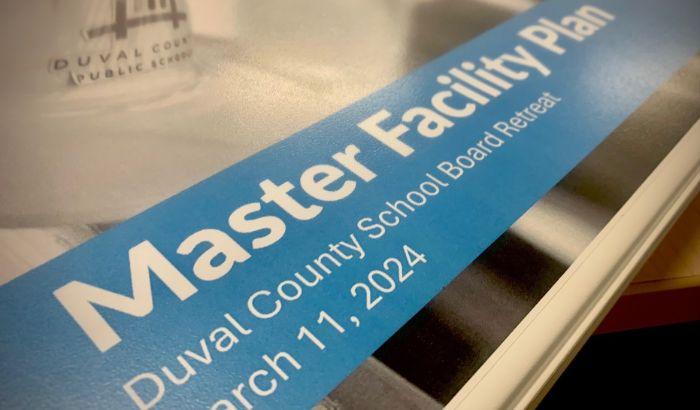
It reads like a poor attempt at an April Fools’ prank: “Middle Schools have struggling enrollment, so let’s start closing elementary schools.” The shock of so many community members as they wake up to the reality that neighborhood schools are on the chopping block is gut-wrenching.
Indeed, Duval County Public Schools is moving to make massive changes, including considering plans to close high-performing, nationally recognized, historically significant elementary schools across the county. This is officially the talk of the town. And from my view, it needs to stay front and center. The school closures are just the beginning of what can only be described as massive deviations from “The Bold Plan” presented to our communities. They have seemingly placed that plan on hold for at least six months while it is revised. If you are feeling overwhelmed by the flurry of information, you are not alone. But I urge you not to look away. This is not only a tomorrow problem; it is impacting students and communities in real time. The implications of these changes will reverberate for generations.
READ: My Child, My Choice: Why I’m Sending My Kids Back to Public School
I wish that I could join in the chorus of voices who are “shocked” by this turn of events. But I am not. This outcome was tragically predictable. It’s given fertile ground by a willingness to look past who and what is being left out of planning. It’s cultivated by the social demand that everyone choose a champion: Public/Neighborhood, Magnet/Choice, or Charter/Homeschool/Private. It is rooted in a refusal to acknowledge that in a state running on a surplus, the funds that are allocated for education seemingly continue to be insufficient to keep successful, high-performing schools open.
Back when “The Bold Plan” was first being posed to our communities, many had concerns. For me, my concerns were with the planning data presented. This data seemed to exclude vital aspects of our school population, programs, and facility usage. At that time, my district had a different board member. That board member welcomed feedback, worked to identify missing populations and programs, and spoke to each concern. It was of some comfort to have a board member who advocated for our students and communities to at least be visible in the data and planning documents upfront. Sadly, it appears that in this second study, massive populations and programs are being excluded upfront. But this time there has been no roadshow to overview the data and little (if any) transparency to prepare our communities.
READ: What I’ve Learned From Having Kids in Both Public and Private School
During one exchange at the school board’s recorded six-hour meeting, a board member asked about missing ESE populations. Her question went unanswered instead, with the facility expert saying, “We are looking at this from a planning level, I think that we have to determine what the boundaries will look like, and then we will determine the placement of those ESE students.” This inherently excludes the ESE population not only from the facility discussion but also from the community itself. Choice students who attend schools with specialized programs, ESE programs, and athletic programs with facility requirements appear to have been excluded as data elements based on comments and the public-facing data documents shared in that retreat. Is it possible that that data exists? Yes. Was it shared with our communities? Not that I’ve seen yet.
The lack of awareness of programs and populations was persistent through the discussions I heard during the planning retreat. I was surprised to hear the District 2 Board Member state, “We also have kids that are crossing the ditch to go to Atlantic Beach Elementary. Which to me is a transportation issue unless they are ‘choice’-ing into a ‘magnet.'” For reference, she is using the term “the ditch” to identify the Intracoastal Waterway. Atlantic Beach Elementary is not a magnet, but it is a choice school that offers a unique and nationally recognized leadership curriculum. To my understanding, as a choice school, any family not zoned to ABE who attends the school must provide their transportation. This program and the students who travel at no cost to the district also appear to be excluded from planning data, nor do they appear in the subsequent options all of which appear to close the school.
The District 2 Board Member continued saying, “That’s something that I think there is no reason we should have our kids crossing the Intracoastal to go to school.” This surprised me, because to my understanding, currently Neptune Beach Elementary, a District 2 Elementary School slated to be turned into a K–8, has students who are zoned to attend it and live on the other side of the Intracoastal Waterway. I did my best to see if somewhere in this plan those students were offloaded to other elementary schools but could not find it. Most of our schools are multifaceted — they cannot be adequately evaluated if their entire population, full programs, and active utilization aren’t included in the data our decision-makers are planning from.
In a world where we know that differentiation is vital to student success, why have we allowed the rule to be that schools compete for limited funding? Our children deserve more options, not less. I hope that as we move forward into these discussions, we do not fight for one school or curriculum over the other. It is flawed and inaccurate to ignore the fact that schools don’t fit neatly into arbitrary categories. School populations are made up of diverse students and the programs they require. Our students, neighborhoods, and communities deserve thriving, fully-funded schools.
















